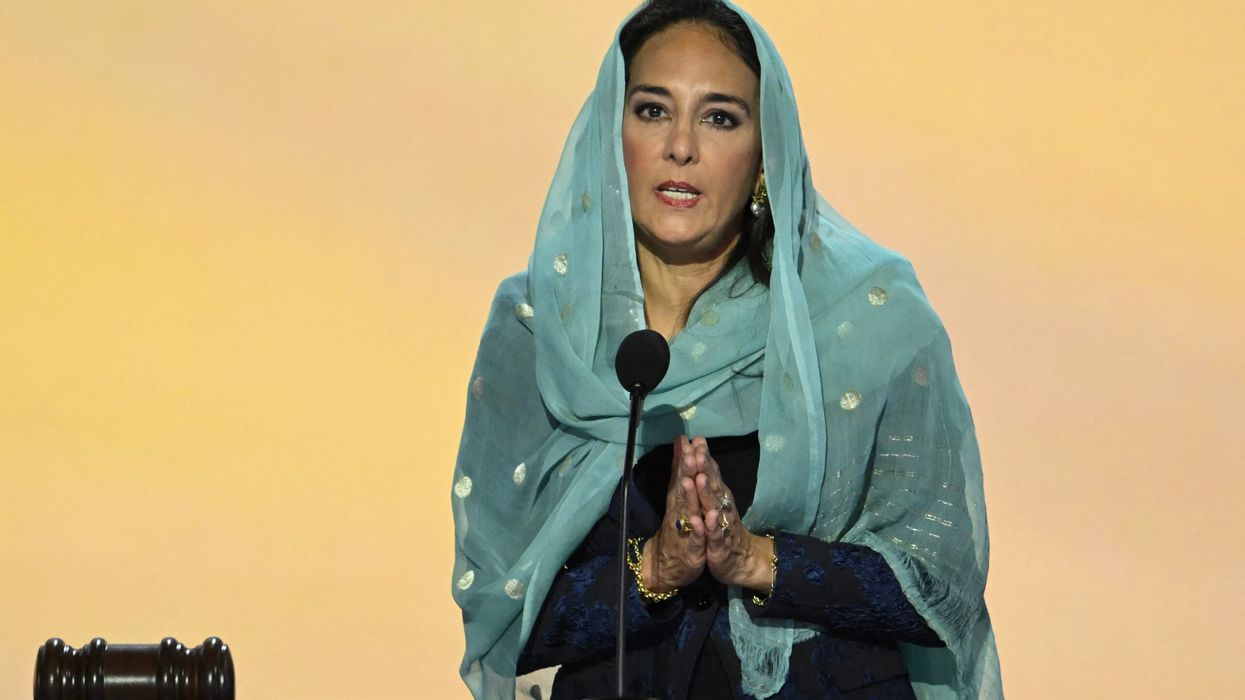TO many farmers in southeast Pakistan, an impending locust attack when summer crops of cotton, sugarcane and rice are being sown, and fruit and vegetables are ready to be picked is a much bigger problem than the COVID-19 pandemic.
"If the crops are eaten up by the locusts, we will have a dire food security issue on our hands," said Zahid Bhurgri, a farmer from Mirpur Khas district in Sindh province.
"The price of flour and vegetables will sky-rocket," making staple foods hard for some to afford, added Bhurgri, who is also general secretary of the Sindh Chamber of Agriculture.
The United Nations’ Food and Agriculture Organization (FAO) estimates losses to agriculture from locusts this year could be as high as PKR 353 billion ($2.2 billion) for winter crops like wheat and potatoes and about PKR 464 billion for summer crops.
A May update from the FAO warned it would be “imperative” to contain and control the desert locust infestation in the midst of the additional impacts of the COVID-19 pandemic on health, livelihoods, food security and nutrition for Pakistan’s most poor and vulnerable communities.
Last year, Pakistan suffered its worst attack of locusts since 1993, for which the country was largely unprepared.
Farmers now have little confidence the government will help them fight a new wave of voracious insects threatening their harvests – though officials said extensive measures were being taken.
"Neither the central, nor the provincial government is doing anything about it," said Bhurgri, who grows vegetables, red chillies, cotton and sugarcane on about 600 acres of land.
'PERFECT SETTING'
The locusts arrived in Pakistan from Iran in June 2019, devouring cotton, wheat and maize, among other crops.
The invasion was initially expected to subside by mid-November. But it has persisted due to favourable weather conditions for continued locust breeding, linked to global warming, according to FAO's Pakistan office.
"Good vegetation due to plentiful rain and a sandy soil provided a perfect setting for the insects to multiply," said Muhammad Tariq Khan, technical director at the Department of Plant Protection in the Ministry of National Food Security and Research.
In a recent letter to Prime Minister Imran Khan, Sindh Chief Minister Murad Ali Shah warned of a "massive locust attack" expected on local farmland when swarms from Iran reach his province in mid-May, which could "prove more harmful" than last year’s invasion.
With little time to waste, farmer Bhurgri decided to take matters into his own hands and "fight the locusts myself".
Using a power sprayer fixed on a tractor, he plans to douse them with pesticides while they rest on trees at night, and get his farmhands to clang pots and pans during the day to drive the pests from his land.
But there are many small-scale farmers who lack the means to deal with the locusts on their own, he added.
Some do not feel confident enough to invest in their crop this year or are cutting costs by not using the required amount of fertiliser, he noted.
CLIMATE CONNECTION
Mubarik Ahmed, national coordinator for locust control at FAO's office in Karachi, said that Pakistan had been taken by surprise last year when locusts wreaked havoc in all its four provinces.
Unprecedented rains that led to vegetation cover in Sindh’s Tharparkar desert had enabled the locusts to breed and then attack crop areas, he said.
The country was “relatively better prepared” to meet the challenge this year, he added. But the situation could get worse with huge swarms expected to arrive in the coming two to three months from Iran, Oman and the Horn of Africa.
Locust swarms are not new in East Africa, the Middle East and South Asia. But climate scientists say erratic weather linked to climate change has created ideal conditions for the insects to surge in numbers not seen in a quarter of a century.
Warmer seas have led to more cyclones in the Indian Ocean, causing heavy rainfall along the Arabian Peninsula and in the Horn of Africa, producing the perfect environment for breeding.
Experts say insect populations have found new homes across Pakistan and are now laying eggs in nearly 40% of its territory, including Sindh but mainly in the southwest province of Balochistan.
FAO locust forecaster Keith Cressman said locusts that had unusually stayed in parts of Punjab, Khyber Pakhtunkhwa and the Indus Valley during the winter would now move southeast to their summer breeding areas in the Cholistan and Tharparkar deserts from May to July.
Swarms breeding in Pakistan’s deserts will likely be joined by others from southern Iran in a few weeks, with more likely to arrive from the Horn of Africa around July, experts predict.
The swarms are expected to be much larger than in 2019, because their numbers increase on average 20-fold with each generation. They travel in swarms of between 30 million to 50 million insects, covering a distance of 150 km (93 miles) and devouring 200 tonnes of crops per day.
NATIONAL PLAN
Khan of the Department of Plant Protection, who is the state's focal point for locust control, said the government had been preparing for the next wave of locusts since last year.
In January, the ministry shared a national action plan for surveillance and control of the desert locusts with the prime minister, who declared the locust attacks a national emergency in February.
That helped drive things forward with funding, surveillance and control operations, coordinated with provincial agriculture departments, the National Disaster Management Authority, the FAO and the army, said Khan.
In addition, officials from the FAO, Afghanistan, India, Iran and Pakistan meet each week to discuss and plan for the regional situation, he added.
Khan said Pakistan now had “a fairly foolproof plan”, including aircraft and ground vehicles to spray the insects, pesticides and more than 1,000 trained teams of four people that can be deployed at short notice across the country.
Timely action since February in the remote desert of Balochistan, with support from the army, had so far helped tame the threat, he added.
Surveys detected the locusts’ breeding ground and the hoppers – or young locusts – have been sprayed regularly to kill them before they become adults, he said.
If control operations go according to plan, he remains hopeful Pakistan will not suffer the high levels of infestation now being experienced in the Horn of Africa.
"One of the reasons I say this with such confidence is that I know what their level of preparation is and what is ours right now," he added.












